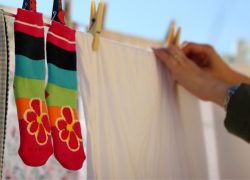What makes Iceland well worth a visit
Iceland is one of the most beautiful countries in the world. With its breath-taking nature, active volcanos, geysers, incredible waterfalls, hot springs (Lagoons) and unique beaches, this is a country that will change the way you see the world and perceive nature.
Its capital Reykjavik is a perfect starting point to explore the land and get to know the culture. There are huge graffiti all over the city each carrying a meaningful message, all cats wear collars although they live in the streets, the people of Iceland love their books and they say that one in three Icelanders is going to publish a book in their lifetime! Education is very important in this country, so they invest a lot in the development of their education system, schools and teachers’ skills.
Icelanders love being outdoors and spend a lot of time in nature playing golf, climbing glaciers or just hiking. They are very conscious of the environment, climate change and sustainability in general. It’s perfectly safe to drink tap water as it is the cleanest and most delicious drinking water in the world.
Keep reading as we bring you all the things one shouldn’t miss. Erasmus+ teacher training course in Reykjavik, Iceland is a one-of-a-kind opportunity for teachers to enjoy this remarkable country, see its sights, get to know Icelandic education system, visit their school, network, and connect with other teachers from all over Europe, develop their skills and grow professionally.
What to see in Iceland
The real answer would be – as much as you can.
Your education doesn’t end when the course ends. Join other teachers in our Cultural Programme and start learning about this wonderful country by exploring it with us. Contact us for more details on Cultural Programme.
The Golden Circle Tour
If you’re there only for a duration of our Erasmus+ Teacher Training Course, then use your time well and join our Cultural Programme Tour that takes you through The Golden circle – most famous of all scenic routes. This is a 300 km long route that lasts all day. Get to visit some of the most popular natural attractions in Iceland: Thingvellir National Park, the Geysir geothermal area, Gullfoss waterfall, volcano Kerid Crater, and Friðheimar tomato farm. For more information, contact us!
We’ll also take you through a guided walking tour of Reykjavik. Learning about the place where the course is held is also an important part of Erasmus+ experience and teachers’ development.
Among other stunning wonders, outside Reykjavik, we recommend:
1. Going on a Glacier Hiking Tour,
2. Seeing the Black Sand Beach, Reynisfjara, and listening to the sound of Atlantic Ocean
3. Visiting the Diamond beach, where you can admire the icebergs on the volcanic black sand beach
4. Enjoying true Icelanding Bathing Culture at Blue Lagoon or Sky Lagoon
Aurora Borealis
Do not miss the chance to see one the wonders in this world – the Northen Lights. They are only visible between September and April. That’s why we always hold our courses during this period – so that we can enjoy the beauty of Aurora Borealis after our teacher training course programme.
How to get to Reykjavik, Iceland
Getting to Iceland by plane
Keflavík Airport is located 50 kilometres from Reykjavík.
There are regular airlines connected with Reykjavik all year round.
Getting from the Keflavik airport to the Reykjavík.
To get to the city, take a public or private bus from Keflavik Airport.
Public Bus number 55 leaves almost every hour and makes several stops. The ride takes 70 minutes and the ticket costs 2.280 ISK (15 €) and you can buy it from the bus driver. It is possible to pay by credit card.
Airport Direct buses leave every hour and make just 2 stops: Hamraborg, and Reykjavik Terminal. The price of the ticket is 3890 ISK (27 €) and it will take you about 45 minutes to reach the last stop.
Flybus takes 40 minutes from the airport to the centre. The ticket costs 3 899 ISK. There is no fixed schedule as the buses operate according to flight schedule. It is recommended to book a ticket in advance.
What to do in Reykjavík
Visit Perlan museum. This is a versatile and unique landmark in Iceland. A place where education and magic meet. Its exhibition guides you through the centuries of history that formed the beautiful landscape of Iceland. The true highlight of the museum is its planetarium where you can enjoy the story of the Northern Lights. The top platform has a nice 360 degree restaurant where you can get a view of the city and take some panoramic pictures.
Sun Voyager is a famous sculpture of a dream boat, and it represents an ode to the sun. It’s a symbol of Reykjavik and you can find it in Sæbraut, by the sea. This famous sculpture was made by Jón Gunnar Árnason. One cannot say they were in Reykjavik if they didn’t take a picture there.
Hallgrímskirkja is the largest church in Iceland. The tower is 73 meters high. It provides a panoramic view of Reykjavík, the surrounding mountains and the ocean making it another symbol of the city.
Harpa concert hall and Conference centre is an award winning work of art near Sun Voyager. It represents the centre of cultural and social life, in the centre of Reykjavík.
Sky Lagoon is a true Icelandic experience of the bathing culture. Situated only 13 minutes from the city centre, it is a hot spring spa to nurture all your senses. Make sure to bring a swimsuit. The water is as warm as 40 C while the air temperature can be around 6 C. Enjoy a glass of wine, dip under a hot waterfall and feel the cold breeze coming from the Atlantic Ocean. This is a unique experience that one shouldn’t miss.
Shopping in the beautiful Reykjavík streets (Laugavegur) where every store has its unique charm.
Skólavörðustígur Street painted in rainbow colors, leading to Hallgrimskirkja Church is one of the most Instagrammable locations in Iceland. Located between Bergstaðastræti and Laugavegur it is one of the busiest streets in Reykjavik. There are cute souvenir shops on each side of the road, including clothing stores and cosy cafes.
What to eat in Iceland
Icelandic cuisine is meat and fish oriented. Most restaurants offer “fish of the day” on their menu, but make sure to try smoked lamb while you’re there as it is one of their specialties.
Icelandic Skyr is also something you shouldn’t miss as it tastes like no other Skyr you’ve ever had. It is thick and creamy Icelandic yogurt, although it has a different texture, creamier, than a regular yogurt thanks to the heirloom Icelandic cultures used to make it.
Their supermarkets are very well equipped, and the food is delicious. Vegetables are quite affordable thanks to green houses that use renewable energy sources like hydropower and geothermal energy. Iceland’s greenhouses create a sustainable food system.
Weather in Reykjavík
Be prepared – the weather changes very quickly, so make sure to check the weather before your trip. We recommend bringing a warm jacket and some waterproof raincoat since an umbrella won’t mean much there. The rain doesn’t fall straight down in Iceland, but rather flies around in all directions.
The weather in Reykjavik averages around 1-2 C in wintertime and about 12 C in summer.
Summer season – late May – early September
The summer tourist season lasts from late May to early September. During the first half of this period the sun stays above the horizon for almost 24 hours so get used to pulling dark curtains over your windows to make your room dark.
Even in the middle of the summer the sky is frequently cloudy and the sunshine does not warm the air much. In summer, the temperatures can drop as low as 7 C and rise as high as 25 C.
Winter season
The winter season is the abode of long nights, and severe winter storms.
In winter, the temperature can drop as low as -10 C and rise as high as 50 F 10 C.
You’ll probably hear the joke “if you don’t like the weather, wait for five minutes!” when you’re in Iceland.
Accommodation in Reykjavík
To search for most suitable accommodation in Reykjavik, we recommend checking https://airbnb.com/ and https://www.booking.com/
Other useful information before you pack
The right equipment
Outer layer: Wind and waterproof jacket
Mid insulating layer: wool or fleece. Warm, layered clothes is always the best.
Take gloves and cap – it can get cold even during summer! Make sure to bring warm and waterproof shoes.
The Currency – Krona (ISK)
They accept credit and debit cards in most shops.
Foreign currencies are very rarely accepted.
Looking to make your school more international?
Join our big Erasmus family where every teacher gets to share their story of learning and education.
There are numerous ways for your school to benefit from professional development courses. As true promotors of life-long learning we place special emphasis on connecting schools, creating education processes for the future and developing courses made by teachers for teachers.
If you need more information about this particular Erasmus+ Teacher Training course in Iceland, contact us directly at info@erasmus.courses



